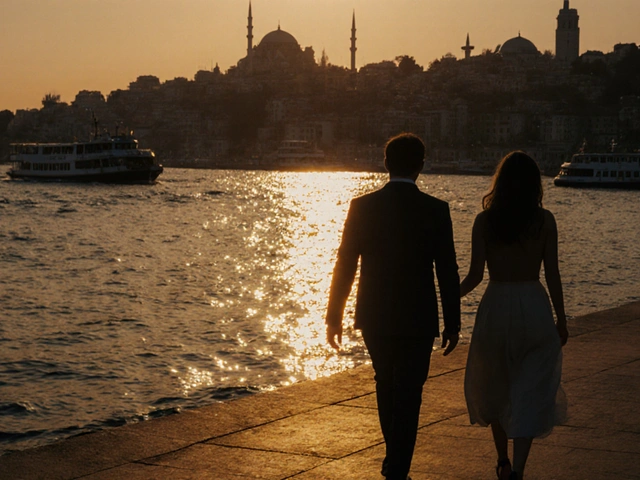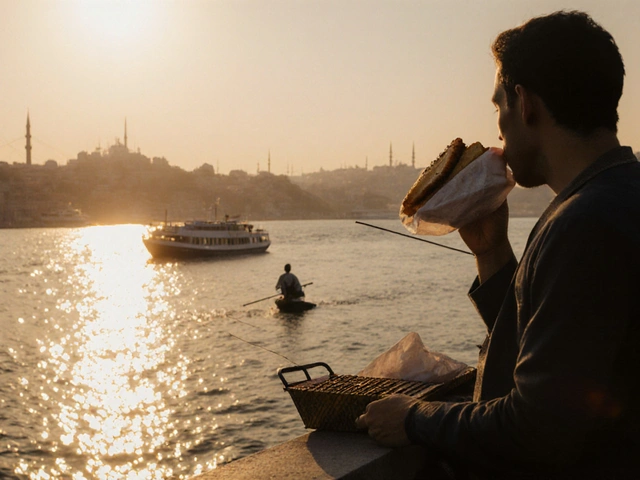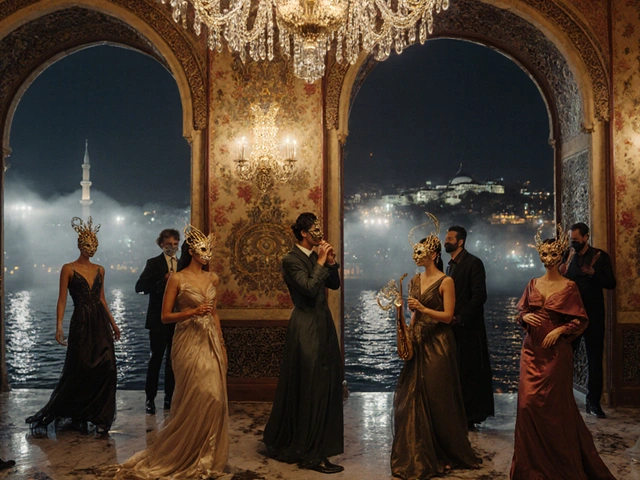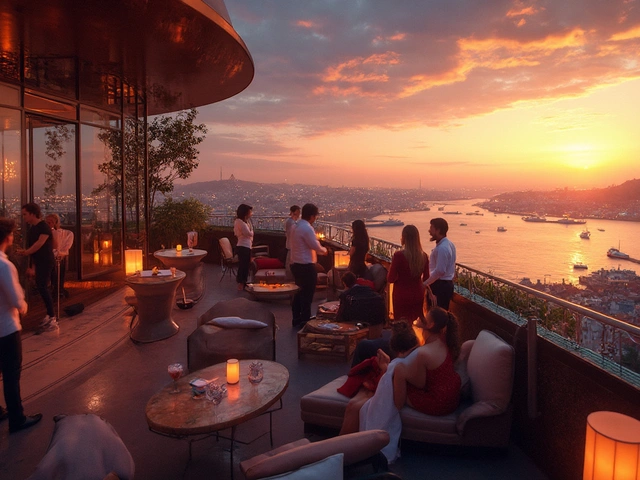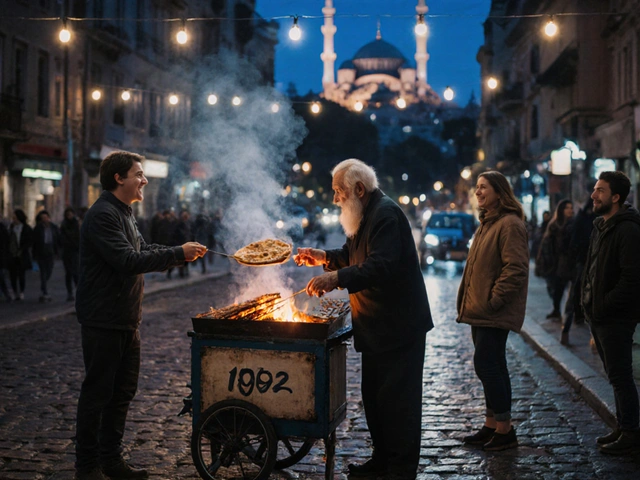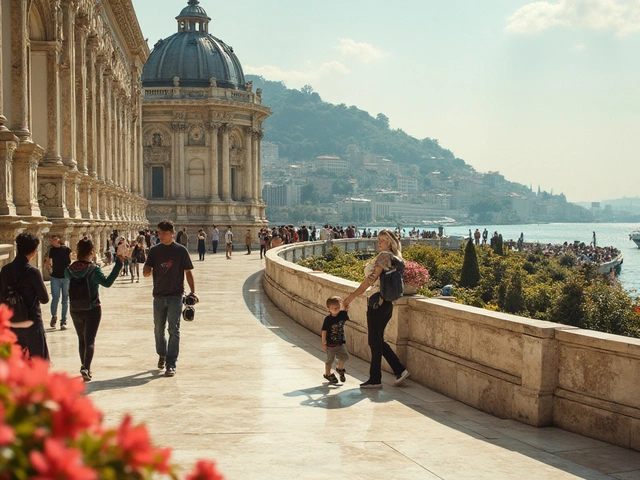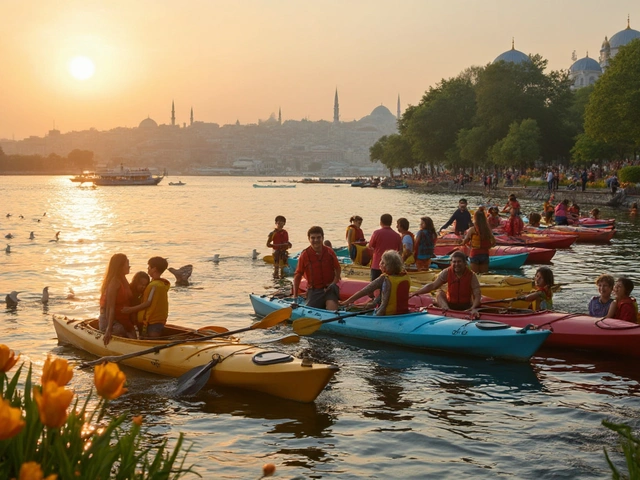In Istanbul, where the call to prayer echoes over rooftops and the scent of simit drifts through alleyways, most visitors rush straight for Hagia Sophia, the Blue Mosque, and the Grand Bazaar. But beneath the well-trodden paths of Sultanahmet and the bustling ferries of the Bosphorus lie dozens of forgotten corners-places where time still ticks slowly, and the weight of empires lingers in quiet courtyards and moss-covered walls. These aren’t just side notes in guidebooks. They’re living fragments of Byzantine, Ottoman, and even Roman history, waiting for those willing to wander off the map.
The Church of St. Mary of the Mongols
Tucked into the quiet streets of Fener, just a 15-minute walk from the Golden Horn, this is the only Byzantine church in Istanbul that never became a mosque. While Hagia Sophia was converted in 1453, this small, unassuming building stayed open for Orthodox worship thanks to a special decree from Sultan Mehmed II. Locals still call it Panagia Mouchliotissa, and if you knock on the wooden door near the corner of Karaman Street, you might be greeted by a priest who’ll show you the original 11th-century frescoes still visible behind the altar. No crowds. No tickets. Just the smell of incense and the faint echo of chants that haven’t changed in 800 years.Yedikule Fortress and the Prisoners’ Cells
Everyone knows the Theodosian Walls, but few venture into Yedikule, the Seven Towers fortress that once guarded the city’s western gate. Inside, the underground cells held high-profile prisoners-from the last Byzantine emperor’s relatives to Ottoman grand viziers who fell out of favor. One cell, marked by a faded inscription in Greek and Ottoman Turkish, is said to have held the poet Nâzım Hikmet during his 1938 imprisonment. Today, you can walk through the same corridors where imperial decrees were signed and rebels were silenced. The rooftop offers one of the most underrated views of the Sea of Marmara, with no tour groups, just seagulls and the distant clatter of a tram on the old tram line to Kadıköy.The Aqueduct of Valens
You’ve seen it-those towering stone arches straddling the busy road between Beyazıt and Çemberlitaş. But how many of you have stopped to wonder where the water came from? Built in 368 AD, the Aqueduct of Valens carried fresh water from the hills of Thrace into the heart of Constantinople. Today, it’s just another urban landmark, but if you walk the narrow path behind the arches near the old train station, you’ll find crumbling sections where the original clay pipes still lie exposed. Locals use the shaded area under the arches as a shortcut, but if you sit there at dawn, you can still feel the coolness of ancient engineering-the same coolness that kept the imperial baths running for centuries.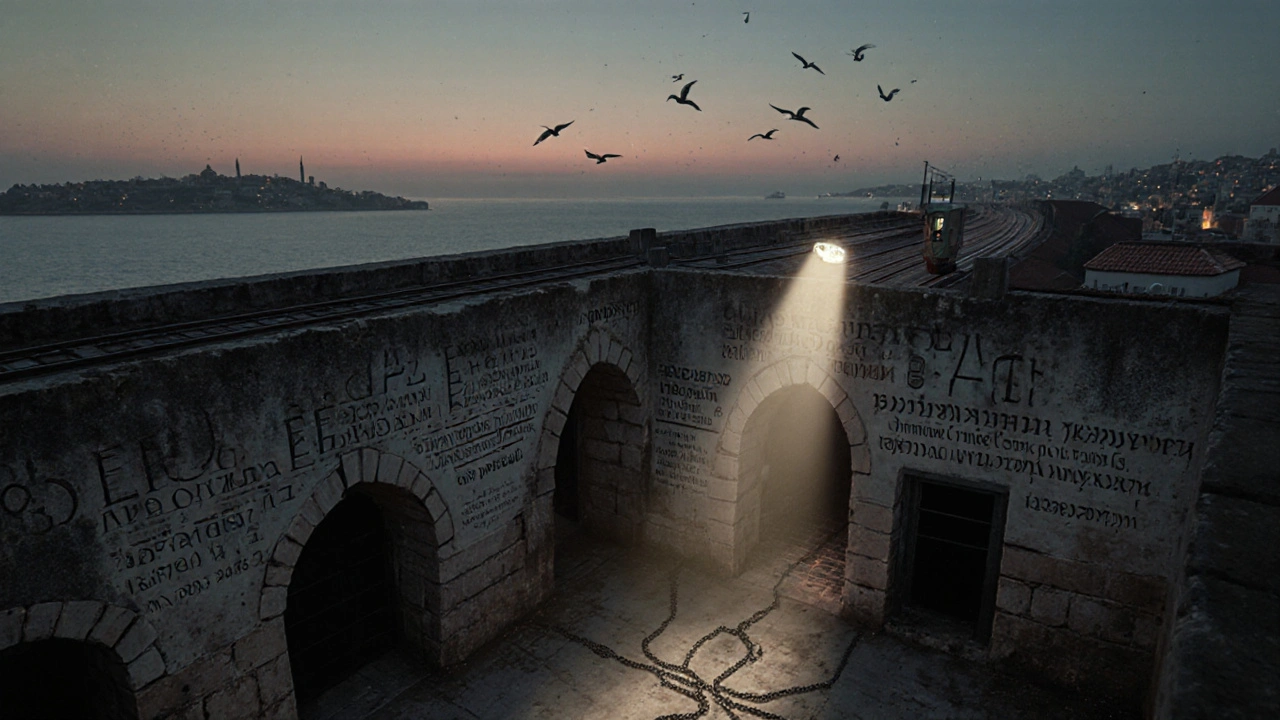
The Chora Church (Kariye Museum)’s Forgotten Annex
The Chora Church is famous for its breathtaking mosaics, but few know about the small, locked gate on the eastern wall that leads to a forgotten courtyard. This was once the burial ground for the Kariye family, wealthy Byzantine patrons who funded the church’s renovations. Inside, you’ll find a handful of 14th-century tombstones, weathered by rain and time, with Greek inscriptions still legible if you know where to look. The caretaker, an elderly man named Mehmet who’s been working there since 1982, sometimes unlocks it for quiet visitors. He’ll point to one stone carved with a fish and a cross-the symbol of early Christians-and say, “They didn’t need grand cathedrals to believe.”The Rustem Pasha Mosque’s Hidden Courtyard
Tucked behind the spice market in Eminönü, this mosque is often missed because it’s so small and tucked away. But its walls are covered in over 2,000 Iznik tiles-some of the finest ever made in the 16th century-with cobalt blues, emerald greens, and crimson reds that haven’t faded in 450 years. What most don’t realize is that behind the prayer hall, through a narrow door marked only by a faded wooden sign, lies a courtyard where the original fountains still function. Locals come here to fill water jugs for their homes, believing the water has healing properties. You’ll see elderly women in headscarves whispering prayers as they fill their bottles, just as they have since the Ottoman era.The Cistern of Philoxenos (Yerebatan’s Forgotten Cousin)
Everyone visits the Basilica Cistern with its Medusa heads and echoing acoustics. But just a 10-minute walk away, near the back of the Istanbul University campus, lies the Cistern of Philoxenos. Built in the 5th century to supply the Great Palace, it’s half-collapsed and overgrown with ivy. The entrance is unmarked, but if you ask a student at the university’s history department, they’ll point you to a rusted iron gate behind the old library. Inside, the water is still clear, and the 120 columns-some carved with Roman eagles, others with Greek letters-stand like silent sentinels. No lights. No signs. Just the sound of dripping water and the occasional bat fluttering overhead. It’s the closest thing Istanbul has to a real-life dungeon from a fantasy novel.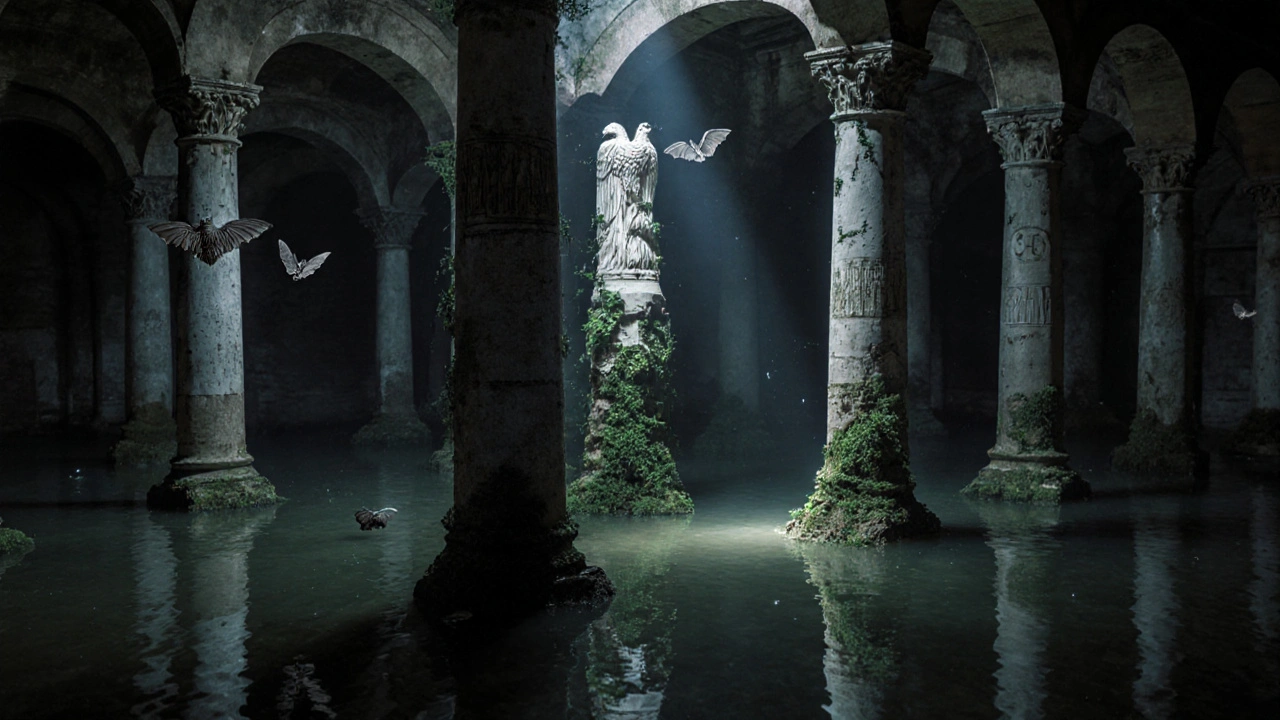
How to Find These Places
These sites don’t appear on Google Maps as “historical landmarks.” You won’t find them on the Istanbul Tourist Pass. To find them, you need to talk to people who’ve lived here longer than the apps have existed. Ask the shopkeeper at the old coffeehouse near the Fener Greek School if he knows the way to St. Mary of the Mongols. Chat with the ferry attendant on the Eminönü to Kadıköy route-he’ll tell you where the aqueduct’s best viewing spot is. Visit during the week, not weekends. Go early in the morning or late afternoon, when the light hits the stone just right. Bring water. Wear comfortable shoes. And leave your camera behind sometimes. Some places aren’t meant to be photographed-they’re meant to be felt.Why These Sites Matter
Istanbul isn’t just a city of grand monuments. It’s a city of layers-where a single street corner might hold the remains of a Roman bath, a Genoese merchant’s house, and a 1970s communist graffiti tag. These hidden sites remind us that history isn’t always preserved in museums or labeled with plaques. Sometimes, it’s tucked behind a bakery in Kadıköy, or hidden under the vines of a forgotten courtyard in Üsküdar. They’re not tourist attractions. They’re memories. And if you walk through them slowly, quietly, you might just hear the city whispering its oldest stories.Are these hidden historical sites safe to visit alone?
Yes, most are perfectly safe, especially during daylight hours. Places like Yedikule Fortress and the Aqueduct of Valens are well-trafficked by locals, even if they’re quiet. The Cistern of Philoxenos is more remote and best visited with a friend, but it’s not dangerous-just unlit and uneven. Avoid going after dark. Always trust your instincts. If a place feels off, step back. Locals often know the safest routes; ask a shopkeeper or café owner for advice.
Do I need to pay to enter these sites?
Most of these sites are free. The Church of St. Mary of the Mongols and the Rustem Pasha Mosque courtyard don’t charge entry. Yedikule Fortress has a small fee (around 150 Turkish lira), but it’s worth it. The Chora Church’s annex requires permission from the caretaker, but he won’t ask for money-just respect. The Aqueduct of Valens and Cistern of Philoxenos are completely open to the public. No tickets, no lines. Just curiosity.
What’s the best time of year to visit these hidden spots?
Spring (April-May) and autumn (September-October) are ideal. The weather is mild, the crowds are gone, and the light is perfect for photography. Summer can be scorching, especially near the aqueduct and cisterns, where there’s no shade. Winter is quiet, but some courtyards get muddy and slippery. If you visit in winter, wear waterproof shoes. Early morning in November, like today, is actually one of the best times-cool air, golden light, and the city still waking up.
Can I bring children to these sites?
Absolutely. Kids love exploring places that feel like secret worlds. The cistern’s dark corners, the fortress’s narrow tunnels, and the moss-covered stones of the aqueduct make for great adventures. Just keep a close eye near water edges and uneven ground. Bring snacks and water-there are no cafes at these spots. The Church of St. Mary of the Mongols is especially kid-friendly; the priest often has small icons for children to touch.
What should I wear when visiting these places?
Comfortable walking shoes are non-negotiable. Many paths are cobblestone, uneven, or overgrown. For mosques and churches, cover your shoulders and knees out of respect-this applies even to hidden sites. Women don’t need to cover their heads unless entering a functioning mosque, but it’s polite. Light layers work best; Istanbul’s weather changes fast. A small backpack with water, a scarf, and a phone charger is all you need.


